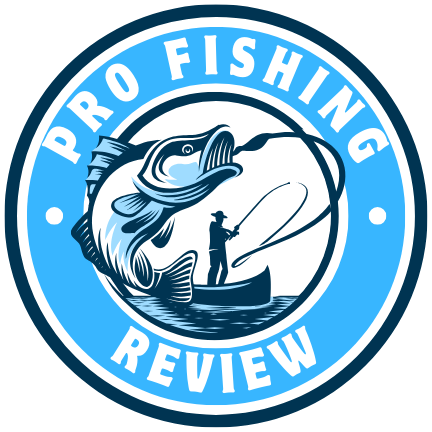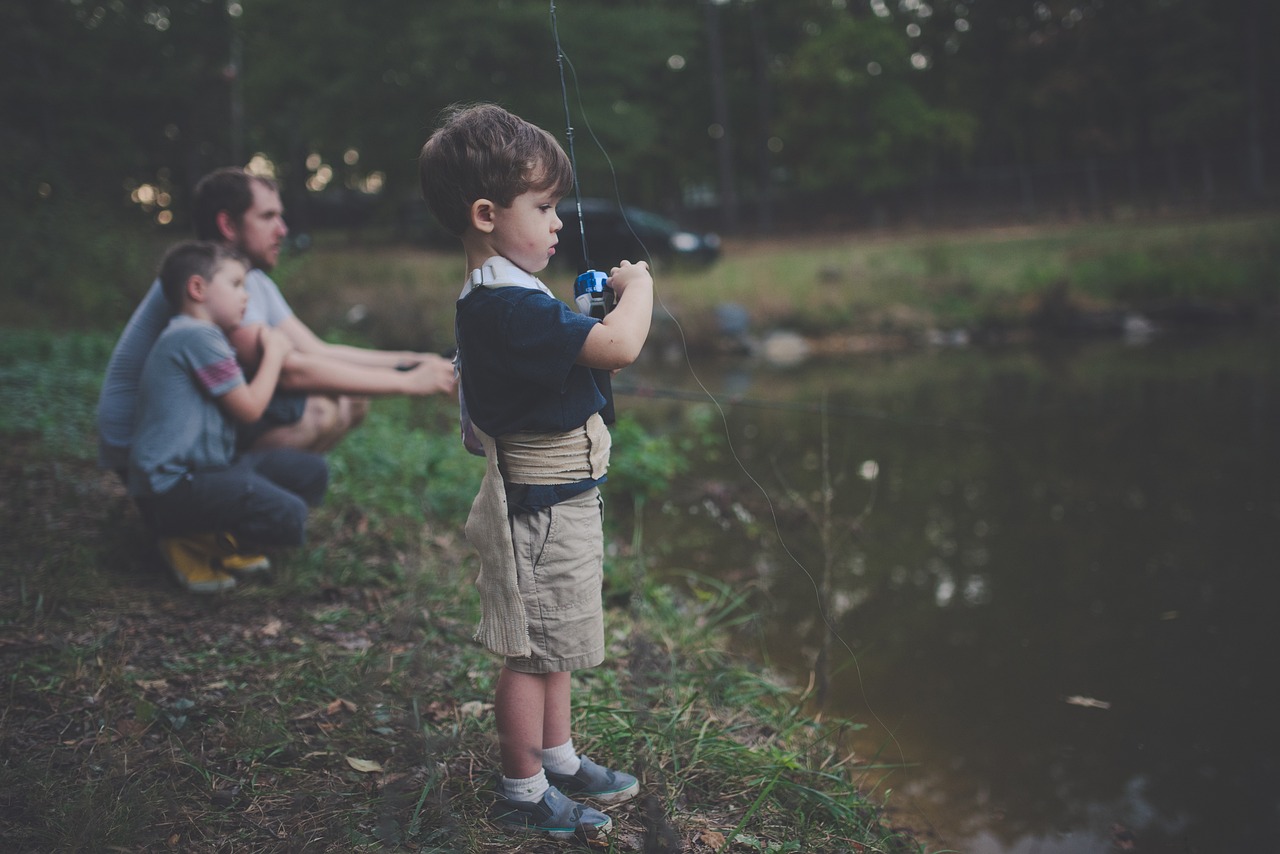If you’re wondering whether 50 degrees is good fishing weather, then this article is here to provide you with all the information you need. In this content, you’ll find an in-depth discussion on four excellent lures specifically designed for fall bass fishing in 50-degree water. Not only does the author provide detailed descriptions of these lures, but they also offer a video demonstration on how to use them effectively for optimal success. With colder water temperatures, bass tend to respond differently, sitting deeper and requiring specific bait presentations. The article suggests exploring long skinny points on the main lake to find bass. Additionally, you’ll discover tips on using chatterbaits and spinnerbaits to simulate dying fish vibrations. If you’re interested in purchasing the recommended baits and gear, the author has conveniently included affiliate links for your convenience. So, get ready to enhance your fishing experience in 50-degree weather!
Factors Affecting Fishing in 50 Degree Weather
Fishing in 50-degree weather can be a rewarding experience, but it’s important to understand the factors that can affect your success. In this article, we will explore the impact of water temperature, fish behavior, suitable fish species, and the best fishing techniques to help you optimize your fishing trips in cooler temperatures.

This image is property of pixabay.com.
Understanding Water Temperature
Water temperature is a crucial factor that can greatly influence fish behavior. It plays a vital role in determining where fish are located and how they behave. In 50-degree weather, the water temperature can have a significant impact on your fishing experience.
Importance of Water Temperature
Water temperature is important because it affects the fish’s metabolism, feeding patterns, and overall activity level. Understanding the optimal water temperature range for different fish species can help you target the right areas and increase your chances of success.
Effects of 50 Degree Water Temperature on Fish
In 50-degree water, fish tend to respond differently compared to warmer temperatures. They often sit deeper in the water, seeking areas with more stable temperatures. The colder water slows down their metabolism, making them less active and requiring different bait presentations to entice them to bite. It’s crucial to adapt your fishing techniques and lure selection to these changes to maximize your chances of catching fish.
Fish Behavior in 50 Degree Water
In 50-degree water, fish exhibit specific behaviors that you need to be aware of to increase your fishing success. Understanding fish location, feeding patterns, and the behavior of specific fish species in cold water can be key to a productive fishing trip.
Fish Location
In cooler water temperatures, fish tend to move to deeper areas of the water column. Look for structures such as drop-offs, ledges, submerged vegetation, or areas that provide cover, as these are likely spots where fish may be congregating.
Feeding Patterns
In colder water, fish’s feeding patterns also change. They become less active and are more selective about what they eat. It’s important to use baits that mimic their natural prey and present them in a way that entices them. Slow down your retrieval speed and consider using finesse techniques to target the more lethargic fish.
Bass Behavior in Cold Water
Bass, a highly sought-after species, showcases specific behaviors in cold water. They are often found near deeper structures, such as rock piles, submerged timber, or docks, providing them with shelter from the colder temperatures. To increase your chances of catching bass in 50-degree weather, consider using lures that appeal to their slower metabolism and try different techniques to trigger a response.

This image is property of pixabay.com.
Suitable Fish Species for 50 Degree Weather
While different fish species have different temperature preferences, several are well-suited for 50-degree weather. These species are more likely to be active and biting in cooler temperatures, making them prime targets for anglers seeking success in these conditions.
Bass
Bass, including largemouth and smallmouth bass, are known to be more active in cooler water temperatures. They can often be found near structures and are attracted to lures that mimic their preferred prey. By targeting bass in 50-degree weather, you can increase your chances of a successful fishing trip.
Trout
Trout are another species that thrive in colder water. They are known for their ability to adapt to a wide range of temperatures, including 50-degree weather. Look for areas with swift-moving currents or deeper pools, where trout may retreat to avoid the cooler surface temperatures.
Walleye
Walleye are known for their preference for cooler water temperatures. These elusive fish are often found near rocky structures and can be targeted using a variety of techniques. In 50-degree weather, walleye can be more active and more likely to bite, making them an excellent choice for anglers.
Crappie
Crappie are known to be more active in cooler water temperatures, making them an attractive species to target in 50-degree weather. They often school near submerged structures and can be caught using a variety of baits and techniques. Their willingness to bite in colder temperatures makes them a popular choice among anglers.
Recommended Lures for 50 Degree Fishing
To maximize your success in 50-degree weather, it’s essential to have the right lures in your tackle box. These lures have proven to be effective in colder water temperatures and can significantly increase your chances of hooking into fish.
Rapala DT10
The Rapala DT10 is a diving crankbait that works exceptionally well in colder water temperatures. Its tight wobble and realistic action mimic the movement of baitfish, making it irresistible to bass and other predator fish. The DT10’s ability to reach depths quickly allows you to target fish at various levels in the water column.
Biffle Bug
The Biffle Bug is a versatile soft plastic bait that is highly effective for bass fishing in 50-degree weather. Its unique design and action make it an excellent choice for slow presentations in colder water. The Biffle Bug can be rigged weedless or on a jighead, allowing you to fish it in a variety of situations.
Neko Rig
The Neko Rig is a finesse technique that has gained popularity among anglers targeting bass in colder water temperatures. It involves rigging a soft plastic stick bait with a weight inserted into one end, creating a subtle, enticing action. The Neko Rig works well when fished slowly and can be a go-to lure for enticing lethargic bass.
Carolina Rig
The Carolina Rig is a staple in the bass fishing world and is particularly effective in colder water temperatures. Its versatility allows you to cover a lot of water quickly and target fish at various depths. By using a leader and a weight, you can present your bait in a natural and enticing manner, increasing your chances of success.

This image is property of pixabay.com.
Using Lures Effectively
While having the right lures is important, using them effectively can make all the difference in your fishing success. Let’s explore some tips and techniques to help you maximize the potential of your lures.
Demonstration Video
For a visual demonstration of how to use these lures effectively in 50-degree weather, check out our video tutorial. In this video, we provide step-by-step instructions and valuable tips to help you increase your chances of catching fish.
Proper Lure Selection
When selecting a lure, consider the water conditions, fish behavior, and the species you are targeting. Matching the color, size, and action of your lure to the prey fish in the area can significantly increase your chances of attracting bites. Experiment with different lures until you find the right combination that entices fish to strike.
Presentation Techniques
Once you have chosen the right lure, it’s important to understand how to present it effectively. In colder water temperatures, fish are less likely to chase after fast-moving lures. Instead, opt for a slower, more methodical presentation to entice bites. Vary your retrieval speed, pause intermittently, and experiment with different motions to trigger a response from the fish.
Identifying Ideal Fishing Locations
In 50-degree weather, understanding where to find fish can make or break your fishing trip. Identifying ideal fishing locations can significantly increase your chances of success. Let’s explore a couple of key areas to target.
Main Lake’s Long Skinny Points
One of the best areas to find fish in 50-degree weather is the main lake’s long skinny points. These points often feature deeper water nearby, providing fish with a transition area between shallow and deeper zones. The structure and potential for food sources make them attractive to a variety of fish species, including bass.
Best Spots for Bass Fishing
When targeting bass in 50-degree weather, look for structures such as submerged timber, rock piles, or docks. These areas can provide bass with shelter and access to baitfish, making them prime spots for targeting these prized fish. Experiment with different lures and presentations in these areas to increase your chances of success.
Additional Strategies for Success
In addition to the recommended lures and fishing locations, there are other strategies you can employ to increase your success in 50-degree weather. Let’s explore a couple of these techniques.
Chatterbaits and Spinnerbaits
Chatterbaits and spinnerbaits can be effective tools for simulating dying fish vibrations in colder water temperatures. The vibrations and flash produced by these lures can trigger a predatory response from bass and other fish species. Experiment with different colors and retrieve speeds to find the right combination for the conditions and the fish you are targeting.
Simulating Dying Fish Vibrations
In colder water, fish are often less willing to move far distances to strike a lure. By simulating the vibrations of a dying fish, you can entice fish to strike closer to their comfort zones. Vary your retrieve speed, experiment with different lure actions, and pay attention to subtle strikes or taps on the line. These can be signs that fish are responding to the dying fish imitation.
Tips for Using Additional Baits
While the recommended lures are effective, it’s always a good idea to have a variety of baits in your arsenal. In 50-degree weather, consider using jigs, soft plastic worms, or jerkbaits to target fish. These baits offer different presentations and can be effective in enticing bites from both bass and other species.
Gear Recommendations and Affiliates
To enhance your fishing experience in 50-degree weather, it’s important to have the right gear. From fishing rods and reels to appropriate fishing lines and tackle, each piece of equipment plays a crucial role. Here are some gear recommendations to consider:
Recommended Baits and Equipment
- Rapala DT10 diving crankbait
- Biffle Bug soft plastic bait
- Neko Rig setup
- Carolina Rig components
Having the right gear can greatly improve your chances of success in 50-degree weather. Visit your local tackle shop or reputable online retailers to find these recommended baits and equipment.
Conclusion
Fishing in 50-degree weather can present unique challenges and opportunities. By understanding the factors that affect fishing in these conditions, such as water temperature, fish behavior, suitable fish species, and the best fishing techniques, you can optimize your chances of success. Remember to adapt your tactics and lure selection to the cooler temperatures and experiment with different presentations. With the right approach and a bit of patience, you can have a rewarding fishing experience even in the cooler temperatures of 50-degree weather. So grab your gear, head out to the water, and enjoy the adventure of fishing in cooler temperatures.

